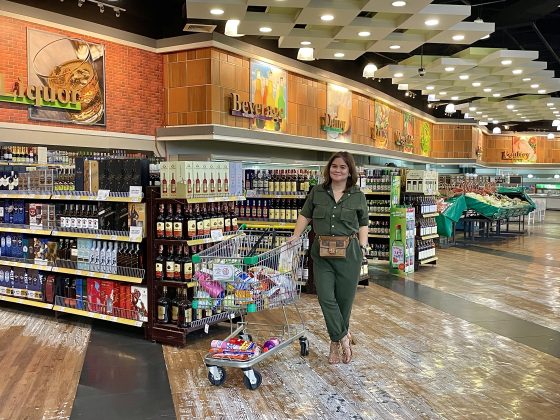I recently hosted the 6th leg of Maya Kitchen’s Philippine Food Tour. For this particular show, Chef Sonny Mariano of The Tasteless Group (Scout’s Honor, Poison Doughnuts, Bad Bird etc) was asked to prepare three dishes from Nueva Ecija. My maternal grandparents are from Gapan, Nueva Ecija so I was more than excited to host the show alongside the multi-talented chef.
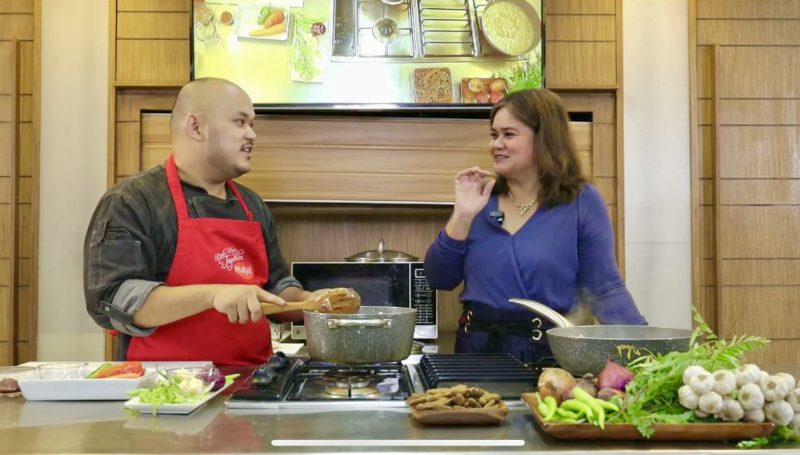
Tinumis , a Nueva Ecija version of dinuguan, was first on our list. Instead of incorporating innards, pork kasim (pork shoulder) was used. And for the pampaasim, freshly squeezed sampaloc and not vinegar was added as the souring ingredient. I had to confess to Chef Sonny that I’m a picky eater and have only ever tried dinuguan once in my life. He assured me that I would like this dish– and I did!
While cooking the first recipe, I shared some trivia regarding using blood as an ingredient in cooking. Aside from the Philippines, other countries have incorporated blood in some of their food. Italy, for example, has blood sausages. Great Britain has blood pudding and Spain has blood pancakes. In Vietnam, duck blood is used to make soup. In our country, however, the origin of dinuguan is contentious. Some food historians say that, in olden times, when people slaughtered pigs, they found a way to use the blood (“para walang tapon”) and the innards. Some say, the ingenious housewives are responsible for the bloody stew. But whatever the case, this recipe has found its bloody place in our local cuisine and has variations in different regions. In Cagayan de Oro, it is called sampayna. In Vigan, they have dinardaren and mollo.
Chicken caldereta was the second order of the day. Again, the difference in the way this dish is cooked in Nueva Ecija is in the meat used. Instead of goat meat, chicken is the protein of choice. Another difference is after the chicken is simmered in a soup base of oil, tomato sauce and tomato paste, kakang gata (coconut cream) is added. Carrots and potatoes finish the dish.
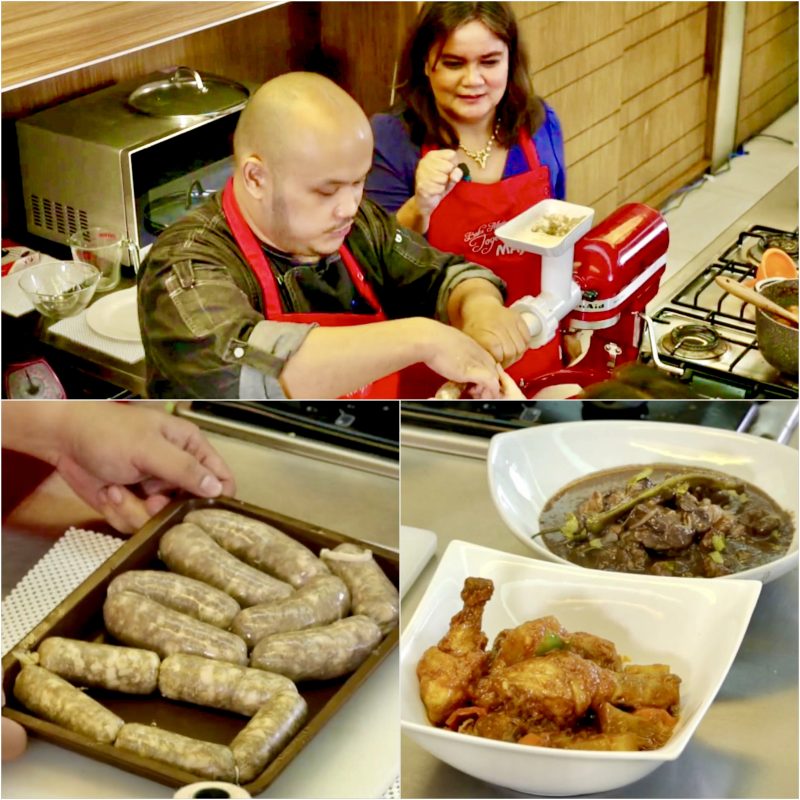
Chef Sonny schooled the viewers on the proper way to make batutay or Nueva Ecijano longganisa. Everything starts with 20 cloves of finely chopped garlic. Add this to ground beef, pork fat, and season with your favorite spices before grinding and stuffing –Voila! We have delicious sausages. For the casing , you can use hog intestines (available at the local palengke) or collagen casing (which is the more practical option if you want to start a sausage business.) which ensures uniformity all throughout. The sausages must be allowed to develop its flavor so keeping it in the freezer overnight before frying is best. If you do not have a grinder, you can always do it mano-mano and use a funnel (embudo) to stuff the longganisa.
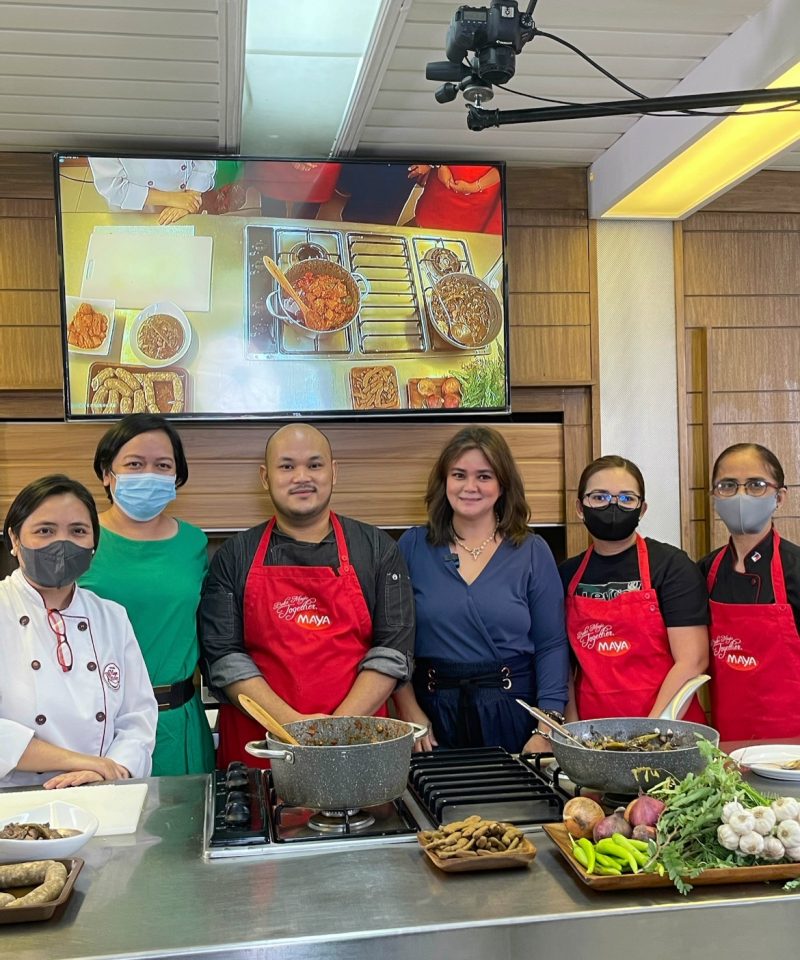
In the end, the proof is in the tasting. The caldereta is the runaway winner for me. What a fun afternoon it turned out to be! Thank you Maya Kitchen for the experience. I always love hosting your live shows. Until the next!
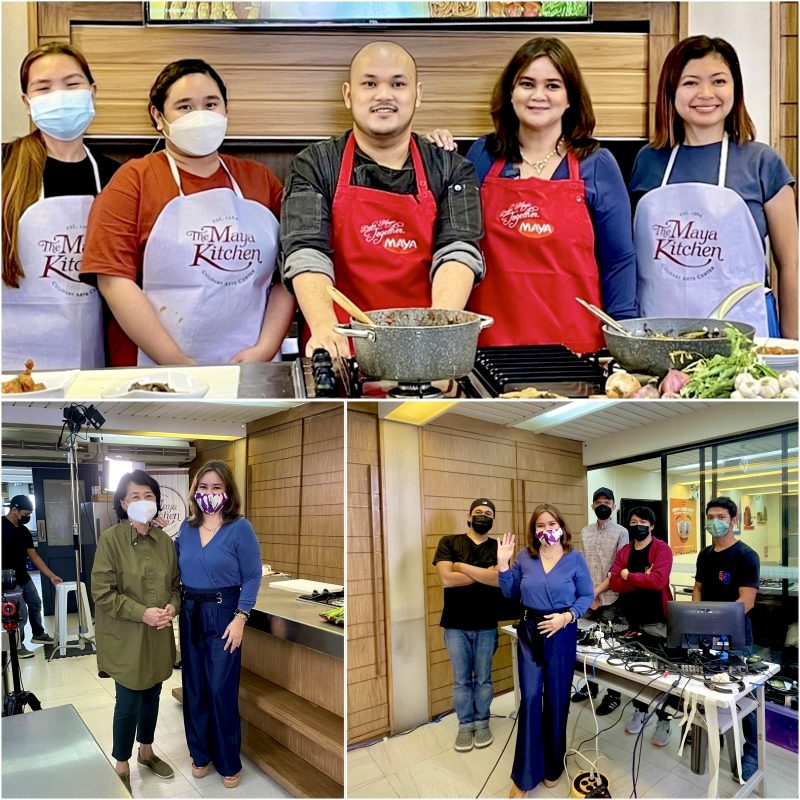
With a pocketful of glitter,


